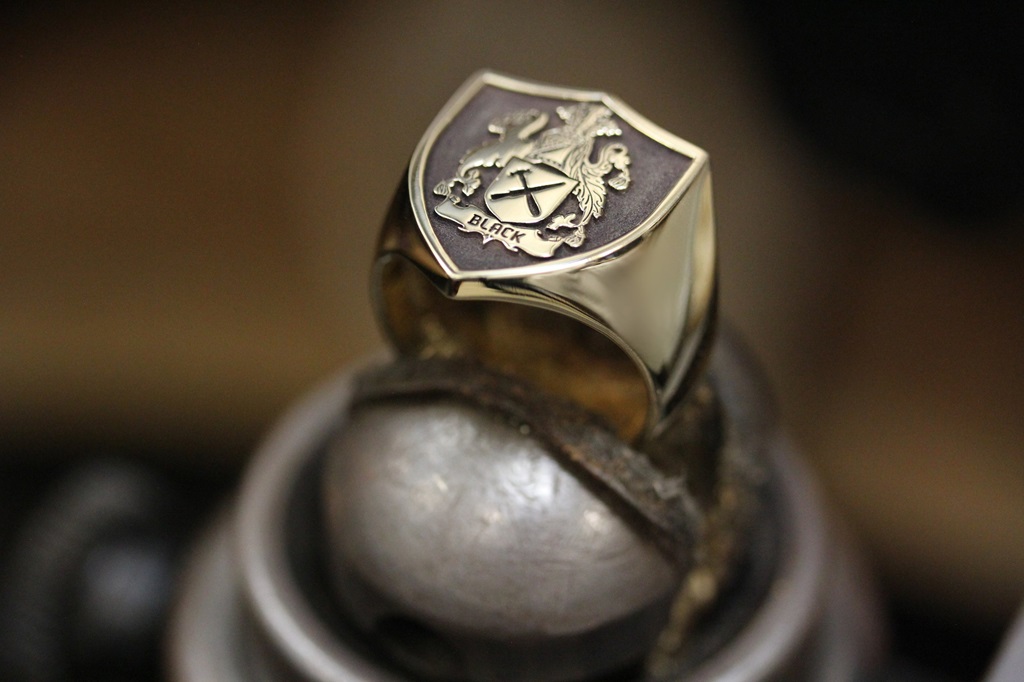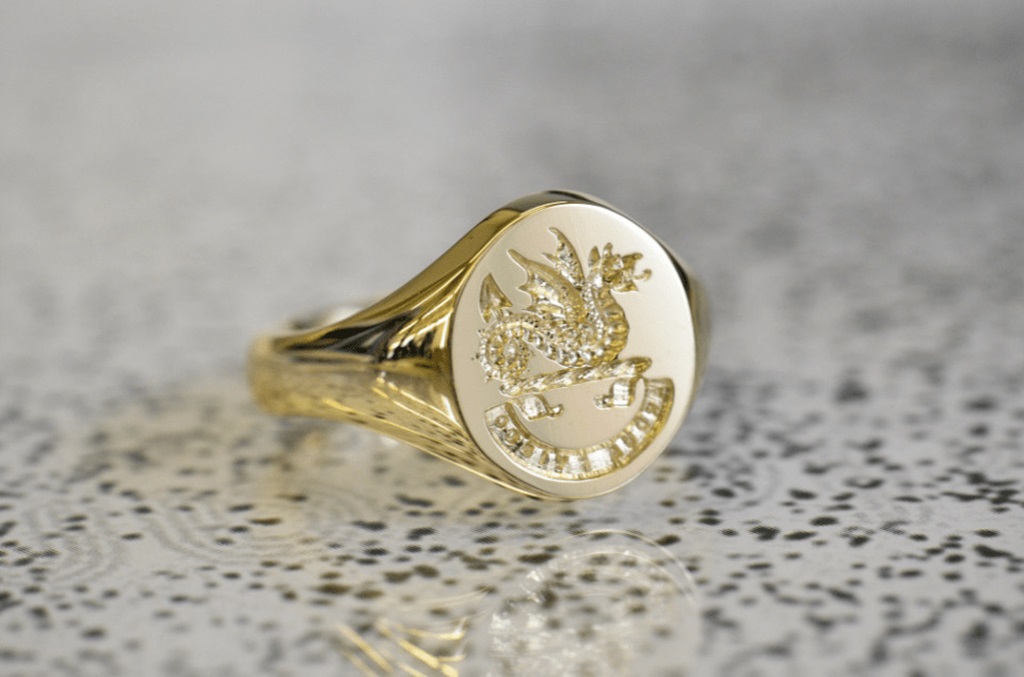Signet rings, once the tools of kings and nobles, have transitioned from symbols of authority to expressions of heritage and individual taste. The inclusion of a family crest elevates this piece of jewelry beyond mere adornment, connecting the wearer to a lineage and a story. Let’s delve into the fascinating etiquette and traditions surrounding these distinctive rings.
The Crest: More Than Just a Pretty Picture
A crest is not simply an aesthetic choice; it’s a visual representation of a family’s history, values, and achievements.
It often includes:
- Shield: The central element, bearing colors and symbols unique to the family.
- Helmet: Signifying rank and participation in medieval tournaments.
- Mantling: Decorative fabric flowing from the helmet, symbolizing protection in battle.
- Motto: A phrase encapsulating the family’s ethos or aspirations.
Wearing a crest on a signet ring is a way to honor this heritage and carry a piece of one’s identity on their hand.
Wearing the Ring: Rules of Thumb (and Pinky)
While some flexibility exists, adhering to tradition can enhance the significance of your signet ring:
- Finger Choice: Traditionally, signet rings are worn on the pinky finger of the non-dominant hand. This stems from practical origins – allowing for easy use of the crest to seal documents with wax.
- Crest Orientation: The crest should face the wearer. This practice, harking back to medieval times, ensures the wearer “never bears arms against the enemy.”
- Gender Neutrality: Signet rings are not exclusive to men. Women have embraced them as well, often opting for smaller, more delicate designs.
Etiquette and Social Considerations
The wearing of a signet ring, especially one bearing a crest, comes with certain nuances:
- Humility: While a source of pride, flaunting a signet ring is considered gauche. It’s a subtle statement, not a billboard.
- Family Ties: Wearing a family crest implies a direct lineage. If your crest is inherited, wear it with pride. If it’s adopted or designed, be prepared to explain its significance.
- Respect for Tradition: While personal style is encouraged, a blatant disregard for tradition may raise eyebrows among those familiar with signet ring customs.
Related: How to Tell if Rolex is Real?
Modern Adaptations: The Crest Evolves
Today, signet rings have shed some of their formality. Modern wearers might:
- Personalize: Opt for initials or a personal symbol instead of a traditional crest.
- Mix Metals: Combine gold and silver for a contemporary look.
- Play with Shapes: Experiment with oval, round, or cushion-shaped signets.
- Engrave the Interior: Add a special message or date for a hidden touch of sentimentality.
Caring for Your Signet Ring
To preserve the beauty and meaning of your signet ring:
- Clean Regularly: Use a soft cloth to remove dirt and oils.
- Professional Polishing: Have your ring professionally polished occasionally to maintain its shine.
- Protect from Damage: Remove your ring before engaging in activities that could scratch or dent it.
The Signet Ring: A Legacy on Your Finger
Whether you adhere to tradition or embrace a modern twist, a signet ring with a crest is more than just a piece of jewelry. It’s a tangible link to the past, a symbol of personal identity, and a potential heirloom for future generations. Wearing it with respect and understanding enriches its significance and allows you to carry a piece of history with you, wherever you go.
Let me know if you’d like any other articles written!





